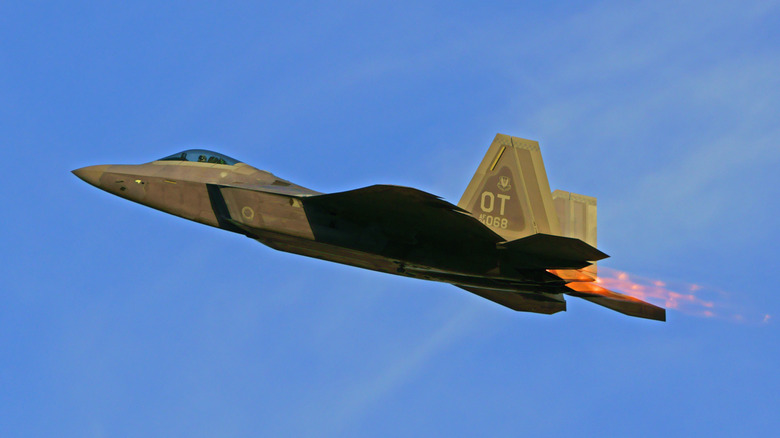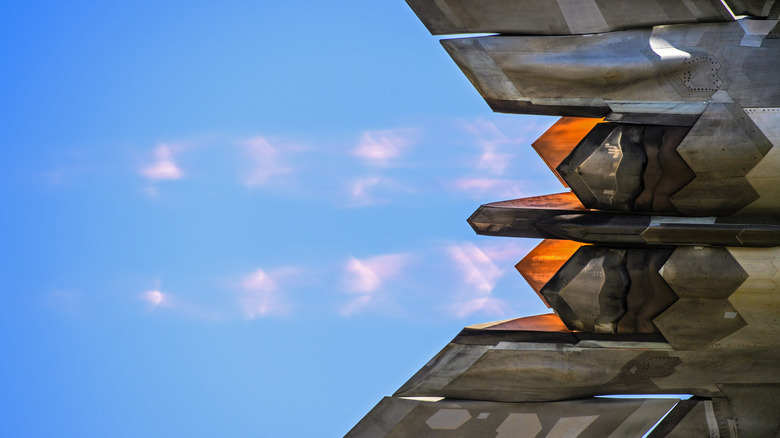F-22 Engine: The Afterburning Turbofan Behind The Incredible Stealth Fighter
The F-22 Raptor is one of the world's foremost fighter jets. There's not many aircraft on Earth that can match its combat prowess, but underneath the stealthy exterior of the Raptor is an engine like every other fighter. In this case, the Raptor's powerplant is a pair of Pratt & Whitney F119-PW-100 turbofan engines. For starters, each F119 put out a lot of thrust — around 35,000 pounds worth.
70,000 pounds of thrust is almost unheard of among modern fighter jets, and other fighter aircraft don't even come close. The Eurofighter Typhoon puts out only around 40,400 pounds of thrust. While the specifications of China's Chengdu J-20 supposed stealth fighter are not totally agreed upon, its WS-10 engines are reportedly nowhere near as advanced as the Raptor's F119 powerplants. Even the speed demon that is the Mach 2.5-capable F-15 Eagle has engines that generate nearly 47,000 pounds of thrust.
The F119 also gives the Raptor the ability to supercruise (no, not the driver assistance system of General Motors). "Supercruise" refers to the F-22's ability to fly faster than the speed of sound, in this case Mach 1.5, and not use fuel-inefficient afterburners.
Afterburners, which the F119 is equipped with, are parts at the end of the engine that allow the ignition of more air and subsequently more fuel, allowing for a burst of speed. According to Smithsonian Magazine, afterburners can use upwards of three times as much fuel compared to regular usage, hence the necessity of the supercruise ability.
The best thrust in the world
Another feature that stands out are the engine's "two-dimensional pitch vectoring exhaust nozzles," to quote Pratt & Whitney. That translates to the engine being able to pitch its thrust up or down by as much as 20 degrees. That allows the F-22 to be significantly more maneuverable than other fighter aircraft, which certainly comes in handy during combat.
Next, are the engine's stealth abilities. It's hard to keep a jet engine quiet and away from the prying sensors of either heat-seeking infrared guided missiles, or the thermal sensors of the enemy. Pratt & Whitney says that the F119's fans are made of a "superalloy" that makes the engine much cooler to operate than the competition. The aforementioned directional nozzles also keep the F-22's operations on the down-low by redirecting heat, but the exact details of the mechanism through which that happens is currently classified.
From a technological standpoint, the F-22's F119 engines stand head and shoulders above anything enemy countries can come up with, and almost everything else within the United States Military's own arsenal (aside from maybe the F-35 Lightning II). From a practical view, although the engines claim to be incredibly fuel efficient and maneuverable, the F-22 hasn't seen jet-to-jet combat to prove those superlatives. On-paper, its specifications speak for themselves.

